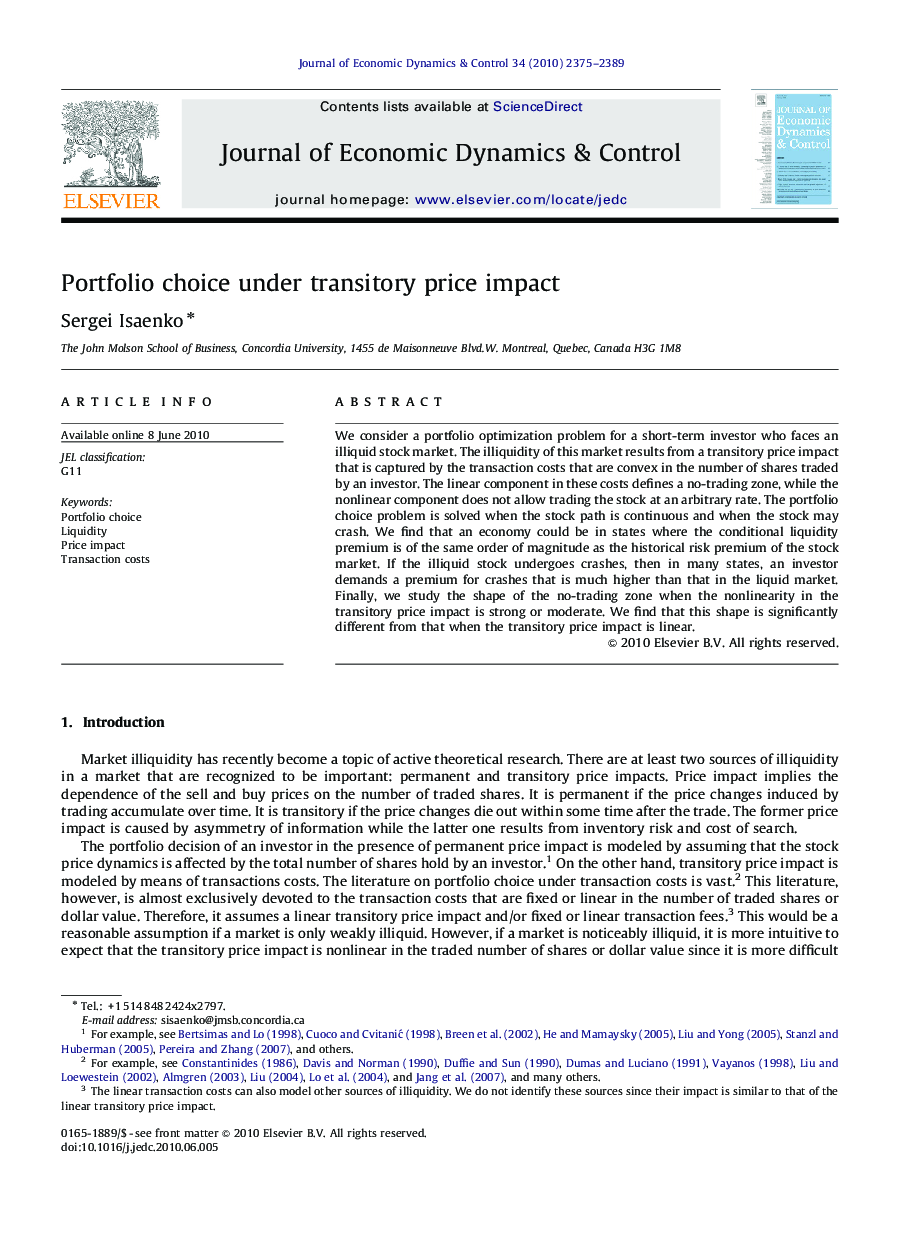| Article ID | Journal | Published Year | Pages | File Type |
|---|---|---|---|---|
| 5098873 | Journal of Economic Dynamics and Control | 2010 | 15 Pages |
Abstract
We consider a portfolio optimization problem for a short-term investor who faces an illiquid stock market. The illiquidity of this market results from a transitory price impact that is captured by the transaction costs that are convex in the number of shares traded by an investor. The linear component in these costs defines a no-trading zone, while the nonlinear component does not allow trading the stock at an arbitrary rate. The portfolio choice problem is solved when the stock path is continuous and when the stock may crash. We find that an economy could be in states where the conditional liquidity premium is of the same order of magnitude as the historical risk premium of the stock market. If the illiquid stock undergoes crashes, then in many states, an investor demands a premium for crashes that is much higher than that in the liquid market. Finally, we study the shape of the no-trading zone when the nonlinearity in the transitory price impact is strong or moderate. We find that this shape is significantly different from that when the transitory price impact is linear.
Related Topics
Physical Sciences and Engineering
Mathematics
Control and Optimization
Authors
Sergei Isaenko,
